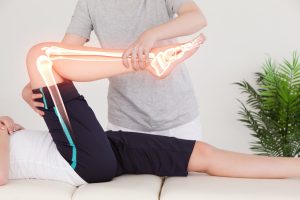The Ultimate Guide to Integrating Osteopathy into Your Healthy Lifestyle

Introduction to Osteopathy
What is Osteopathy?
Osteopathy is a holistic approach to healthcare that emphasizes the interrelationship between the body’s systems to promote overall health. It is rooted in the belief that the body has an inherent ability to heal itself. Regardless of your age or physical condition, osteopathy can help you maintain balance and wellness. Practitioners, known as osteopaths, utilize a variety of techniques that include manual therapy and exercises to address musculoskeletal pain, improve mobility, and enhance bodily function. This comprehensive approach makes osteopathy suitable for a diverse group of individuals, from athletes recovering from injuries to pregnant women seeking comfort.
- The Ultimate Guide to Integrating Osteopathy into Your Healthy Lifestyle
- Introduction to Osteopathy
- What is Osteopathy?
- History and Principles of Osteopathy
- Benefits of Integrating Osteopathy into Your Lifestyle
- Pain Management
- Improving Posture and Alignment
- Finding the Right Osteopath for You
- Qualifications and Credentials
- Choosing the Right Osteopathic Clinic
- Osteopathic Techniques and Treatments
- Soft Tissue Manipulation
- Joint Mobilization
- Incorporating Osteopathic Care into Your Wellness Routine
- Osteopathy and Exercise
- Osteopathic Nutrition Guidelines
- Osteopathy for Specific Health Conditions
- Osteopathy for Back Pain
- Osteopathy for Stress Relief
- Precautions and Side Effects of Osteopathic Treatment
- Risks of Osteopathic Manipulation
- Precautions for Pregnant Women and Children
- Integrating Osteopathy with Other Complementary Therapies
- Osteopathy and Acupuncture
- Osteopathy and Chiropractic Care
History and Principles of Osteopathy
Osteopathy was founded in the late 19th century by Dr. Andrew Taylor Still, who sought to establish a practice that treated the root causes of illness. Some key principles of osteopathy include:
- Holistic Care: Addressing the entire body rather than just isolated symptoms.
- Self-healing: Encouraging the body’s innate ability to heal.
- Structure and Function: Understanding how the body’s structure influences its function.
Dr. Still’s vision has evolved into a respected field, continuing to impact healthcare and promoting well-being throughout communities worldwide.
Benefits of Integrating Osteopathy into Your Lifestyle
Pain Management
Integrating osteopathy into your lifestyle can be a game changer when it comes to pain management. Many individuals suffer from chronic pain that limits their daily activities, but osteopathic treatment offers a gentle, non-invasive approach. For instance, a friend of mine struggled with persistent back pain due to long hours at her desk. After a series of osteopathic sessions, she noticed a significant reduction in discomfort. General benefits include:
- Natural pain relief: Osteopathic techniques may alleviate pain without the need for medication.
- Individualized treatment: Osteopaths tailor sessions to meet your specific needs, ensuring a personalized approach.
- Long-term solutions: By addressing underlying issues rather than just symptoms, osteopathy promotes lasting relief.
Improving Posture and Alignment
Poor posture can lead to various health issues, from headaches to digestive problems. Osteopathy can help realign the body and promote better posture. Regular sessions can encourage:
- Muscle relaxation: Skilled manipulation helps release tension in tight areas.
- Enhanced awareness: Osteopaths teach you about your body’s alignment, empowering you to maintain good posture.
- Increased flexibility: Improved range of motion facilitates better alignment during daily activities.
By adopting osteopathy, individuals can enjoy a more balanced, pain-free lifestyle.
Finding the Right Osteopath for You
Qualifications and Credentials
Finding the right osteopath is crucial for maximizing the benefits of the treatment. First and foremost, it’s important to verify their qualifications and credentials. In many countries, osteopaths must complete a recognized degree and extensive training. Key qualifications to look for include:
- Degree in Osteopathy: A Bachelor’s or Master’s degree from an accredited institution.
- Licensure and Registration: Osteopaths often need to be registered with a professional regulatory body.
- Continued Education: Ongoing training ensures they stay up-to-date with the latest techniques and practices.
A good example is a local osteopath I visited who proudly displayed their certifications in the clinic. This not only gave me confidence in their expertise but also reassured me about the quality of care I would receive.
Choosing the Right Osteopathic Clinic
The choice of clinic can significantly impact your overall experience. Consider the following when selecting an osteopathic clinic:
- Location and Accessibility: Choose a clinic that’s conveniently located to ensure frequent visits are manageable.
- Reviews and Recommendations: Look for online testimonials or ask friends for referrals.
- Atmosphere: A welcoming environment can enhance your comfort level during treatments.
By taking these steps, you can ensure a positive and effective osteopathic experience tailored to your needs.
Osteopathic Techniques and Treatments
Soft Tissue Manipulation
One of the most commonly used techniques in osteopathy is soft tissue manipulation. This gentle hands-on approach focuses on relaxing tense muscles and improving circulation. As someone who often experiences muscle tightness from stress, I found that soft tissue manipulation not only alleviated my discomfort but also enhanced my overall sense of well-being. Benefits of this technique include:
- Improved Muscle Function: Addressing tightness promotes more efficient movement.
- Pain Relief: By reducing muscle tension, many find immediate relief from discomfort.
- Enhanced Blood Flow: Increased circulation can speed up recovery from injuries.
Joint Mobilization
Another valuable technique is joint mobilization. This involves gentle movements applied to joints to increase their range of motion and reduce stiffness. It’s particularly beneficial for those with chronic joint issues or arthritis. For instance, after incorporating joint mobilization into my routine, I noticed significant improvements in my flexibility during yoga sessions. Key aspects of joint mobilization include:
- Gentle Techniques: Safe and controlled movements ensure minimal discomfort.
- Restoration of Mobility: Regular treatment can help restore function and mobility in affected joints.
- Holistic Approach: Encourages not just physical healing but also overall wellness.
These osteopathic techniques can play an essential role in your path to improved health and comfort.
Incorporating Osteopathic Care into Your Wellness Routine
Osteopathy and Exercise
Integrating osteopathy into your wellness routine can significantly enhance your overall health, particularly when combined with regular exercise. Osteopaths often emphasize the importance of physical activity, tailoring recommendations to fit individual needs. Personally, after integrating osteopathic advice into my workout regimen, I’ve experienced not only reduced pain but also improved strength and stamina. Here are some key aspects to consider:
- Customized Exercise Plans: Osteopaths can assess your body mechanics and suggest exercises that support your specific goals.
- Preventing Injuries: Techniques from osteopathy can help identify potential weaknesses, allowing you to avoid injuries before they occur.
- Increased Flexibility: They may recommend stretching routines to complement your workouts, further enhancing mobility.
Osteopathic Nutrition Guidelines
Nutrition also plays a vital role in osteopathy. Understanding the relationship between diet and health can significantly enhance the benefits of your osteopathic care. Some practical guidelines include:
- Whole Foods Focus: Emphasize fruits, vegetables, whole grains, and lean proteins for optimal nutrition.
- Hydration: Drink plenty of water to support joint lubrication and overall body function.
- Balanced Diet: Incorporate a variety of nutrients to ensure your body has everything it needs for healing and performance.
By incorporating osteopathy into your exercise and nutrition routines, you can create a well-rounded approach to wellness that nurtures both physical and mental health.
Osteopathy for Specific Health Conditions
Osteopathy for Back Pain
Back pain is an all-too-common complaint, affecting nearly everyone at some point in their lives. Osteopathy offers a holistic approach that can be especially effective for managing this issue. After struggling with persistent back pain due to bad posture and long hours at my desk, I discovered the relief that osteopathy could provide. Techniques used to address back pain include:
- Soft Tissue Techniques: These help relax tense muscles, alleviating strain on the back.
- Joint Mobilization: Gentle movements restore mobility and reduce stiffness in the spine.
- Postural Assessment: Osteopaths can identify poor posture habits and offer corrective exercises.
Osteopathy for Stress Relief
In our fast-paced world, stress can take a toll on both body and mind. Osteopathy can play a vital role in managing stress through relaxation techniques. I remember how a series of osteopathic sessions helped me unwind and cope better with daily pressures. Benefits of osteopathy for stress relief include:
- Enhanced Relaxation: Techniques like cranial osteopathy promote deep relaxation, reducing tension.
- Improved Sleep: By addressing muscle tightness and promoting relaxation, many experience better sleep patterns.
- Mind-Body Connection: Osteopaths often guide patients to recognize the interplay between stress and physical tension, fostering overall well-being.
Incorporating osteopathy into your care can make a significant difference in managing back pain and stress, leading to a healthier, more balanced life.
Precautions and Side Effects of Osteopathic Treatment
Risks of Osteopathic Manipulation
While osteopathy is largely safe and beneficial, it’s crucial to be informed about potential risks associated with osteopathic manipulation. Most individuals experience positive outcomes, but it’s important to acknowledge that some may encounter mild side effects. From my personal experience, after my first manipulation session, I felt some temporary discomfort, which is not uncommon. Here are some potential risks:
- Soreness: Similar to post-exercise soreness, mild discomfort may occur after a session.
- Nerve Irritation: In rare cases, nerve irritation can happen, leading to temporary numbness or tingling.
- Fractures or Injuries: While extremely rare, those with pre-existing conditions may be more susceptible to injuries during manipulation.
Precautions for Pregnant Women and Children
Special precautions must be taken when it comes to treating pregnant women and children. Osteopathy can be beneficial for both groups, but it’s essential to consider specific guidelines:
- Pregnant Women: Always seek a qualified osteopath experienced in prenatal care. Certain techniques may be contraindicated, especially during early pregnancy.
- Children: Treatment should be gentle and tailored to a child’s developing body. A pediatric osteopath is best suited for young patients.
By understanding these precautions and potential risks, you can approach osteopathic treatment with awareness and confidence, ensuring a safe and positive experience.
Integrating Osteopathy with Other Complementary Therapies
Osteopathy and Acupuncture
Integrating osteopathy with acupuncture can create a powerful approach to health and wellness. Both therapies focus on achieving balance within the body, but they utilize different techniques. Personally, I experienced significant relief from chronic tension when my osteopath suggested that I try acupuncture alongside my treatments. Here’s how these two modalities complement each other:
- Pain Management: While osteopathy addresses the musculoskeletal system, acupuncture works on energy pathways, allowing for comprehensive pain relief.
- Holistic Healing: Combining these therapies provides a multifaceted approach to healing, targeting both physical and emotional aspects.
- Increased Relaxation: The synergy of manual therapy and acupuncture can enhance relaxation, making each session more effective.
Osteopathy and Chiropractic Care
Another beneficial integration is between osteopathy and chiropractic care. Both aim to improve bodily function but differ in techniques and philosophies. After receiving chiropractic adjustments, I found that following up with osteopathic treatments helped maintain alignment and improve mobility. Key benefits include:
- Comprehensive Care: Combining both can address a wider range of issues, from structural misalignments to soft tissue injuries.
- Enhanced Recovery: Each therapy can support and accelerate recovery in various conditions, promoting overall well-being.
- Personalized Treatment: Practitioners from both fields can collaborate to create a tailored treatment plan for the patient’s unique needs.
Integrating osteopathy with these complementary therapies can offer a comprehensive path to health, enhancing the benefits of each treatment.





